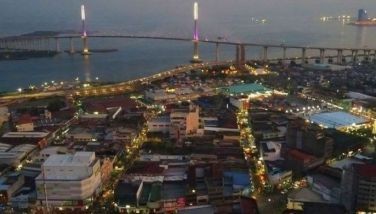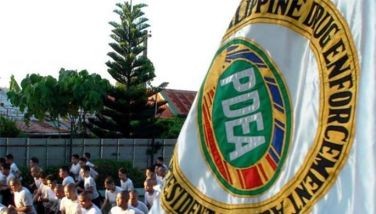PCG: Special permit needed to join fluvial
CEBU, Philippines — The Philippine Coast Guard Station (CGS) in Cebu has issued "safety" guidelines for sea vessel owners and operators that intend to join the fluvial procession on the eve of the 454th Fiesta Señor.
In a three-page document dated January 6, CGS Cebu has directed participating vessel and motor banca owners and operators who are holders of Certificate of Public Convenience (CPC) to secure a special permit from the Maritime Industry Authority (MARINA)-7.
After which, they have to signify their intention to join the fluvial procession at the CGS Cebu office located along Don Vicente Sotto Street.
For owners of fishing boats, which are below 3 gross tons, CGS Cebu has advised them to register under their respective local government units, and they, as well, have to signify their intention of participating at the CGS Cebu office.
All participating sea vessels or sea crafts are categorized in three divisions (big, medium, and small) based on their gross tonnage, each assigned with their own color code.
The “big” vessels with 50.1 to 250 gross tons belong to Division 1, assigned with the white color code.
Under Division 2 are “medium” vessels or motor bancas with 3.1 to 50 gross tons, assigned with the yellow color code, while “small” boats with 3 gross tons and below belong to Division 3 with the red color code.
The participants are asked to base their design on the color coding scheme, this means the colors of their decorations such as flaglets and “banderitas” should be predominant to the color code of the division they belong to.
The fluvial organizers again stressed that balloons are prohibited as decorations.
Aside from the aesthetic component, all vessels or boats should carry life jackets which should be of the same number of the persons on board. Overloading and overcrowding are also strictly prohibited.
CGS Cebu has required passengers aboard vessels with open deck accommodations to wear life jackets during the fluvial procession.
Participants or dance groups wearing costumes are exempted of this policy. However, life buoys or rings should be available for them in case of emergency.
Anticipating of possible engine trouble, steering problems, or any emergency, every vessel owner should prepare a warning flag (in red color and about 2 to 3 feet in length) that will be used in signaling other nearby vessels.
Moreover, each division, apart from their individual color code, has a designated area for the formation during the fluvial procession that will begin at 6 a.m.
Participating vessels are asked to be at their designated assembly areas not later than 4 a.m.
Participants under Division 1 should assemble at the vicinity between FF Cruz Whart in Mandaue City and Pilipinas Shell Depot in Lapu-Lapu City.
Assembly area for Division 2 is beneath the First Mactan Bridge while Division 3 is from Petron Depot up to the Marcelo Fernan Bridge.
Each participant will be assigned with personnel from Coast Guard, police, military or other government offices that will act as marshals to supervise the vessel.
Aside from this, those joining the fluvial procession should be 13 years and above.
Participants are also disallowed from bringing liquor, firecrackers, illegal drugs, firearms and other dangerous weapons.
Participants are discouraged to converge at the top deck of the vessel and are advised to stay at the lower decks as much as possible.
CGS Cebu has warned that if participants fail to comply with these guidelines, the office will issue an inspection and apprehension report to the owner or the operator that will be adjudicated by CGS Cebu and endorsed by MARINA-7.
The fluvial procession takes place during the eve of the highly-anticipated feast, which is celebrated every third Sunday of January.
Roble Shipping Inc. was chosen as this year’s official carrier of the Santo Niño image that will use its fast craft M/V Super Joy as what may seem to be a “modern-styled” galleon.
Even the galleon will be subjected to safety inspection by MARINA-7 personnel.
The pilgrim image travels over the seas in returning to its sanctuary, reenacting the arrival of the image to Cebu’s shores way back in 1521 during the Spanish expedition of Portuguese explorer Ferdinand Magellan.
The present-day fluvial procession follows after the inland “traslacion” or transfers to other churches in the neighboring cities, namely, the National Shrine of St. Joseph Parish in Mandaue City on the 18th and the National Shrine of Nuestra Señora de Regla Parish on the next day.
The Augustinian fathers purposely send the pilgrim image to other localities outside Cebu City to propagate the devotion of the Santo Niño.
On the 19th, there will be a send-off Mass at 2 a.m. at St. Joseph shrine in Mandaue that will follow with a motorcade at 3 a.m. in going to Nuestra Señora de Regla shrine in Lapu-Lapu.
There will be two Masses – at 4 a.m. and 5:30 a.m. - before the image will be carried to Muelle Osmeña wharf for the fluvial procession from there to Pier 1 in Cebu City.
According to CGS Cebu, only the Super Joy galleon is allowed to dock at Berths 26 and 27 at Pier 1. (FREEMAN)
- Latest























